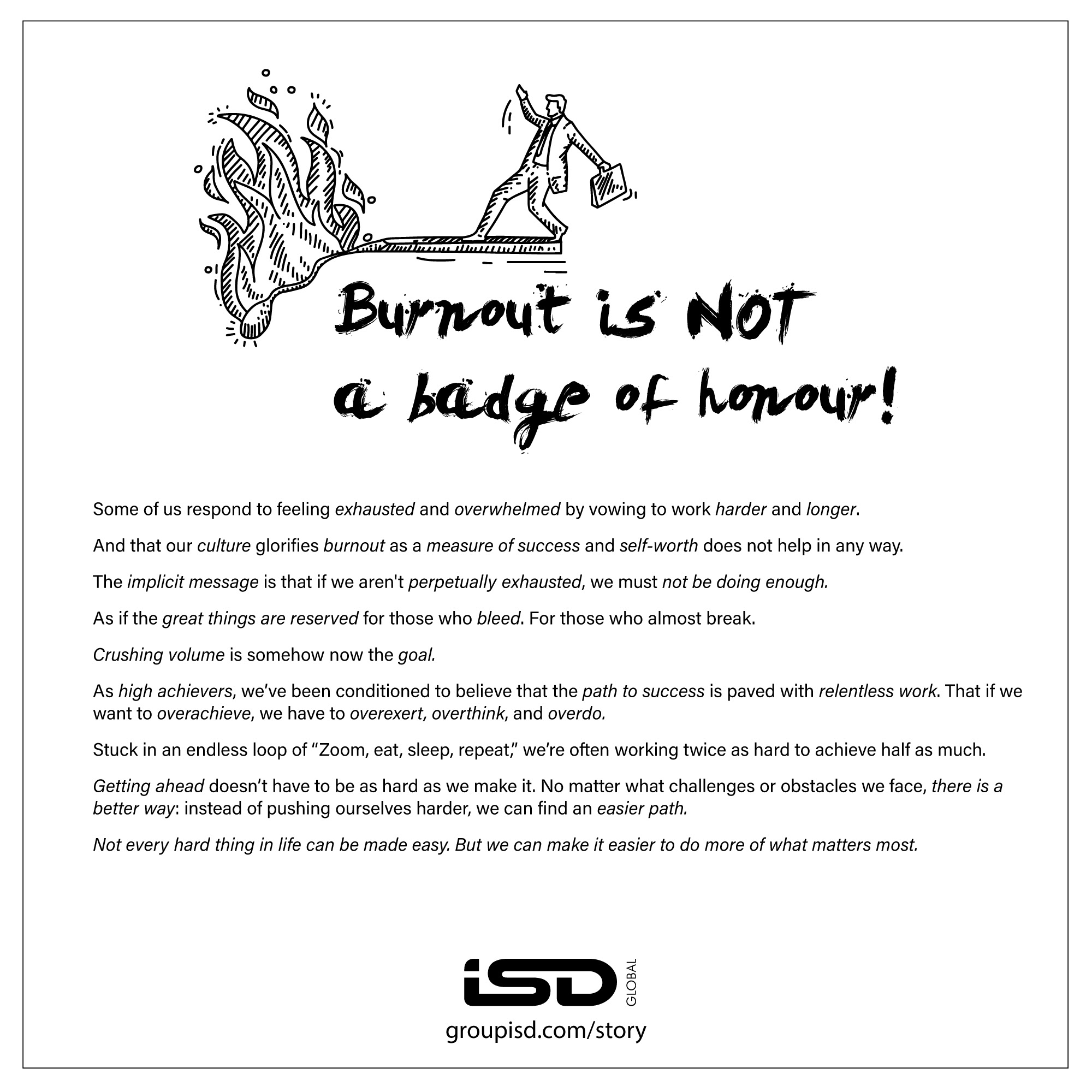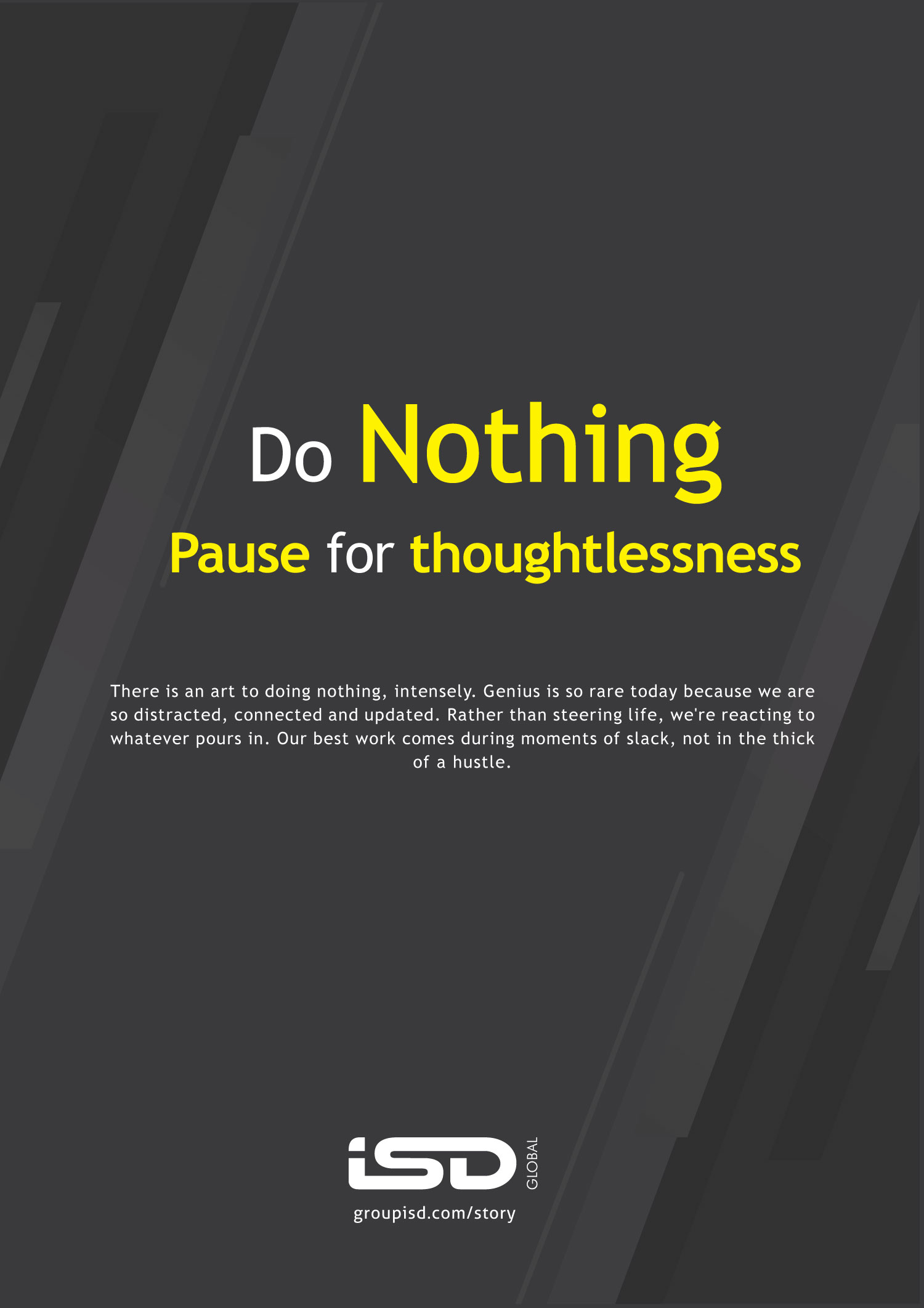The lion doesn’t hustle. It rests 20 hours a day. And when it moves, the savannah makes way. So why are you still sprinting like your inbox is a finish line?
We live in a world where doing nothing is a crime, and busy is worn like a badge of honor pinned to a coffee-stained calendar.

But here’s the cosmic joke: Doing nothing may be the most productive thing you ever do.
In a world obsessed with optimization, hustle culture, and active recovery, we’ve forgotten the profound wisdom hidden in complete stillness. While everyone else is power-walking through their “rest days” and meditation-multitasking their way to burnout, the real revolutionaries are discovering something ancient yet radical: the transformative power of total, unapologetic surrender to nothingness.
Lin-Manuel Miranda, creator of Hamilton, one of the all-time great hits on Broadway, attributes his breakthrough musical ideas to long periods of lying on his couch, staring at the ceiling, doing absolutely nothing productive.
J.K. Rowling conceived Harry Potter during a delayed train journey where she sat motionless for hours, not writing, not planning—just existing with her thoughts. Read staring out of the train window.
Archimedes discovered his principle of buoyancy not while actively problem-solving, but while passively soaking in a bath, completely surrendered to the moment.
Indian mathematician Srinivasa Ramanujan claimed his most profound mathematical insights came during periods of complete mental stillness, which he described as mathematical meditation.
The above are some of the real-world revolutionaries who mastered nothing.

The world doesn’t need another person trying harder. It needs someone brave enough to surrender completely, to trust in the wisdom of stillness, and to discover what emerges from the fertile void of doing absolutely nothing.
Your next breakthrough isn’t hidden in another course, another method, or another strategy. It’s waiting in the space between your thoughts, in the pause between your breaths, in the revolutionary act of complete surrender.
The question isn’t whether you have time for this—it’s whether you have the courage to discover who you become when you stop trying to become anything at all.
The revolution begins when you stop. The transformation happens when you surrender. The magic emerges when you do nothing.
We have all been sold the concept of active rest . The idea that rest must be purposeful—meditate, journal, stretch, walk. But even these “restful” activities keep our minds subtly engaged, always doing, always processing. True rejuvenation, however, often requires a radical step further: complete surrender. Not just unplugging, but powering down. Not just slowing the pace, but stopping altogether.
Doing nothing works spectacularly because when you surrender to stillness, your brain shifts from task mode to default mode(the brain’s background processor)—the state where daydreams, insights, and creative breakthroughs are born. Your body, too, has a chance to reset, repairing itself at a cellular level. Nature’s rhythms seep in, and you rediscover your own. So yeah, the best version of you isn’t found in the flurry of 52 browser tabs.
Across the world, cultures have long recognized the transformative power of stillness:
-
Italy’s “Dolce Far Niente”: The sweet art of doing nothing, celebrated as a way to savor life’s moments and let inspiration bloom.
-
Japan’s “Ma”: The space between things, where silence and emptiness are honored as the birthplace of creativity.
-
India’s Sages in Silence: From Himalayan hermits to urban meditators, India’s spiritual masters have long retreated into silence and nature, believing that true wisdom arises when the mind is quiet.
- Spain’s Revolutionary Siesta Philosophy: Spain didn’t just give us the siesta; they gave us a masterclass in civilizational wisdom. The traditional Spanish siesta isn’t a nap—it’s a complete halt to productivity, a societal agreement that human beings are not machines. During these sacred hours, entire cities surrender to stillness, and creativity flourishes in the silence.Research from Harvard’s School of Public Health found that countries practicing regular daytime rest periods show 37% lower rates of heart disease and significantly higher levels of innovation in creative industries.
Consider Mahatma Gandhi, who regularly withdrew into silence, emerging with renewed clarity and vision. Or Rabindranath Tagore, who found his poetic genius not in endless activity, but in long, contemplative walks by the riverside, simply being with nature. Steve Jobs credited his greatest ideas to long, aimless walks and periods of quiet reflection. Ratan Tata, one of India’s most respected business leaders, is known for his love of solo drives and quiet retreats, where he disconnects to reconnect with his vision. Albert Einstein famously came up with his theory of relativity while—guess what—daydreaming. Bill Gates schedules regular Think Weeks in a cabin with no devices—just silence, books, and thoughts.
India has gifted the world two profound concepts that embody passive rest: Santosha (contentment with what is) and Shavasana (corpse pose). But these aren’t just yoga concepts—they’re revolutionary approaches to human optimization through surrender.
The Rishis of the Himalayas have practiced Akinchan (the state of having nothing and wanting nothing) for millennia. Modern neuroscience now confirms what these sages knew: the brain’s most creative insights emerge not from thinking harder, but from thinking nothing at all.
Vipassana meditation, as taught in India’s ancient tradition, involves sitting in complete stillness for hours—not trying to achieve anything, just witnessing. Steve Jobs credited his Vipassana retreats in India as the source of Apple’s most revolutionary innovations.
Denmark’s hygge and Sweden’s lagom aren’t just lifestyle trends—they’re cultural commitments to doing less and being more. These societies consistently rank among the world’s happiest and most innovative, not despite their embrace of slow living, but because of it.
We’ve been sold a lie. The wellness industry has convinced us that rest needs to be productive—that we should be stretching while we recover, journaling while we unwind, or listening to educational podcasts during our downtime. This isn’t rest; it’s performance anxiety dressed in yoga pants.
It would help if we can re-define productivity. Stillness is a form of inner productivity. The ROI? Clarity, energy, creativity, and sanity. Schedule Nothing Like You Schedule Meetings. Put it on your calendar. Call it The Void or Unmeeting with the Universe. Make it sacred. Find Your Inner Sloth. Channel the spirit animal of champions. Lie on your back, stare at the ceiling, and let your mind wander like a lost tourist.
Doing Nothing is the New Doing Everything.
In a world that worships hustle, dare to be a heretic. Surrender to the sofa, let nature serenade you, and discover what happens when you let go—completely. Sometimes, the best way to leap forward is to lie down and let the universe do the heavy lifting. Who knew that the secret to success could be as simple as… nothing?
